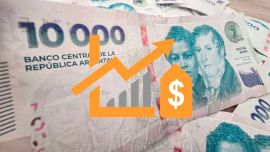A new report has calculated that Argentina’s average annual inflation between 2003 and 2022 was 30 percent, within a scenario where public spending tops revenue by 11 percent on average.
The study by the IDESA (Instituto para el Desarrollo Social Argentino) private consultancy firm links the phenomenon of inflation to instability experienced following the exit from convertibility some two decades ago.
The work points out that during that period the various governments on average increased the money supply by 34 percent every year.
“These data show that over the last two decades the national public sector covered less than 90 percent of its spending with genuine revenues, thus explaining the excesses of debt and money printed,” said the report’s authors.
IDESA maintains: “Without ignoring that inflation is a multi-causal phenomenon, the chronic fiscal deficits oblige pesos to be printed beyond public demand, thus leading to high inflation.”
“The current situation (with revenues only covering 80 percent of spending and money printed along with three-digit inflation) is the extreme manifestation of a process beginning soon after convertibility imploded in 2002 with consistent deterioration in the last 20 years,” indicates the consultancy firm, headed by the economist Jorge Colina.
The report continues: “The key to explaining this process of decadence is a disorganised state,” explaining that in turn with ”a disordered pension system and overlapping taxes and spending among the three levels of government, compounded by the lack of a professional civil service.”
This phenomenon, says IDESA, leads to the state automatically tending “to spend constantly beyond its means and administering that spending very badly.”
“The problem with these state flaws is not only excess spending but the loss of socio-economic productivity provoked by bad public-sector intervention. This ends up destroying the currency,” concludes the study.
– TIMES/NA



















Comments